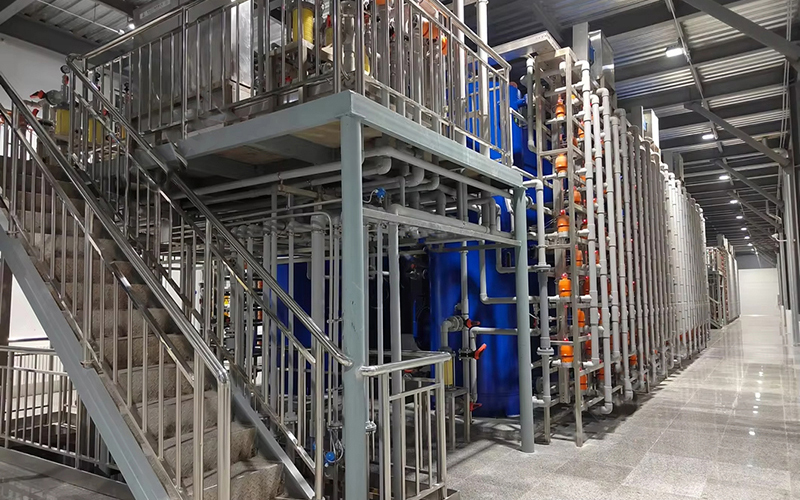
Citric acid is a natural acid that is found in abundance in citrus fruits such as lemons, limes and oranges. It is a versatile compound with various applications in diffrernt industries.

1. Crushing: Cleaned corn is crushed and screened to yield corn flour with ≤30% under a 60-mesh screen, then stored in a tank.
2. Adjusting: Water is added to the corn flour slurry to adjust the dry solids (DS) to 28-32%. NaOH and enzymes are added to adjust the pH.
3. Liquefaction: The adjusted slurry undergoes starch gelatinization and liquefaction in the 1st jet cooker and liquefaction column.
4. Saccharification: After enzyme deactivation in the 2nd jet cooker, the slurry is cooled, enzymes are added, and saccharification occurs to achieve the desired Dextrose Equivalent (DE).
5. Filtration: A filter press removes coarse proteins from the saccharified liquid, which is sent to the next section. The filter cake is sent for drying.
6. Seed Production: A portion of the saccharified liquid is used to grow high-temperature resistant strains in a seed tank under controlled DS and pH conditions.
7. Fermentation: The filtered liquid is transferred to fermentation tanks, where sterile air is continuously fed. The fermentation ends when the glucose concentration is below 1g/L.
8. Pre-filtration: The fermentation liquid undergoes pre-filtration to remove impurities, producing thin citric acid for the first neutralization.
9. Neutralization:
1st Neutralization: CaCO₃ is added to the citric acid to form a calcium citrate precipitate (Ca₃(C₆H₅O₇)₂·4H₂O), which is filtered. The filtrate is waste water.
2nd Neutralization: The calcium citrate precipitate reacts to form calcium hydrogen citrate (CaH(C₆H₅O₇)·3H₂O), which is filtered again.
10 Acid Hydrolysis: The calcium hydrogen citrate reacts with sulfuric acid (H₂SO₄) to produce citric acid (C₆H₈O₇) and gypsum (CaSO₄). The gypsum is separated and sold.
11. Decolorization and Filtration: Activated carbon is added to the citric acid to decolorize it. The filtered liquid proceeds to ion exchange.
12. Ion Exchange: The citric acid solution undergoes ion exchange to remove cations, anions, and impurities, producing refined citric acid.
13. Evaporation: The citric acid is concentrated by evaporation to increase the dry solids (DS) content.
14. Crystallization:
Monohydrate Citric Acid Crystallization: The concentrated citric acid undergoes crystallization to produce monohydrate citric acid.
Anhydrous Citric Acid Crystallization: The concentrated citric acid is further processed to produce anhydrous citric acid.
15. Separation: The crystallized products (both monohydrate and anhydrous citric acid) are separated from the mother liquor, producing wet products for further processing.
16. Drying and Sieving: The wet products are dried and passed through a vibration sieve to obtain the final qualified citric acid products.
Applications of Citric Acid
1. Food and Beverage: Used as a flavor enhancer, preservative, and acidulant in products like soft drinks, candies, jams, and gelatin. It adds a sour taste and extends shelf life by inhibiting bacterial growth.
2. Cleaning Products: Effective in removing hard water stains, rust, and mineral deposits. Found in household cleaners, dishwasher detergents, and descaling agents for appliances like coffee machines and kettles.
3. Personal Care: Used in skincare and cosmetic products for exfoliation, skin renewal, and improving texture. Also included in shampoos and conditioners to balance pH.
4. Industrial Applications: Applied in metal cleaning, water treatment, and as a pH regulator in various chemical processes.
Product Showcase





dimension(l*w*h)
CUSTOMIZED
Main products
Monohydrous citric acid
Products output
30tons per day
Raw materal consumption
60tons per day
Major processing technology
Fermentation method
Products application
Food/chemical/cosmetics/construction/drinks
Package
In wooden cases or in anti-corrosive packaging















 Company Industry Experience(40 Years)
Company Industry Experience(40 Years)
 Jason
Jason
 Scan QR Code to Add Contacts
Scan QR Code to Add Contacts